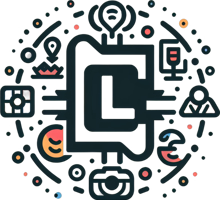In April, direct sales giant Amway organized the largest incentive program ever held in Australia. In total, 16,000 delegates from across Asia visited Melbourne in six waves of 2,000 and 3,000 people for five days each — spending an estimated $100 million.
Direct sales organizations are thriving in APAC, with Amway’s Asia division, for example, making up 80% of the company’s global $7 billion business in 2024. Their rise reflects the vast size of the population, growing consumer markets, and the opportunity for product sales in the region, said Selina Sinclair, CEO of Realm, a Singapore-based destination management company.
“Culturally we are also highly tech-enabled and we rely heavily on social networking and word-of-mouth recommendations, making this business model attractive in our region.”
As with other industries, direct sales incentives trips are often tiered, with different programs for the highest Chairman’s Club performers and second-tier President’s Club. The destination is the primary draw for potential qualifiers. On-stage recognition is also an important driver for top performers.
Massive Scale and Energy
But that’s where the similarities end, said Tom Wilson, group vice president-business development at Maritz. “The primary difference is that most incentive trips in other sectors are a combination of volume and target-based plans, whereas the direct selling space is more about volume, recruiting metrics, and building a downstream pipeline. They also have a much greater degree of product/sales training.”
Eileen Lee, senior vice president, Americas, Singapore Tourism Board, knows direct sales incentive programs well, having hosted 500 attendees from NuSkin in 2024 as well as Herbalife Nutrition’s Asia Pacific Future President’s Team Retreat in 2022, with 1,700 delegates. Herbalife will return to Singapore with its 25,000-person APAC Extravaganza in 2026.
“These programs stand out from the rest due to their scale and energy,” she said. “They seek out not only cities but also regions and countries that are equipped to handle large-scale logistics and offer a wide variety of experiences.”
The trips can be deeply rooted in the cultures of their organizations. “Many in the U.S. are faith-based, and the founders are often seen as internal celebrities,” said Melissa Van Dyke, senior vice president, integrated marketing and innovation at Creative Group.
“Older organizations exhibit deeper generational structures,” she said. “For instance, a company with 10 original founders and a 30-year history may need dedicated content and space for each founder’s extended network.”
Not Your Mother’s Incentive
While former generations of winners viewed the annual incentive trip as a chance to get away from home, families are part of an increasing number of trips today. “There’s a growing emphasis on ‘layered experiences’ — engaging activities that cater to diverse interests and demographics,” said Lee. “This shift reflects the recognition that these trips are not only about professional achievement but also about enriching personal connections.”
The biggest changes are yet to come, experts say, as direct sales companies move away from the old model. Instead of relying on independent sales representatives showcasing products directly to small groups, often through home parties or demonstrations, more than 35% of existing direct selling companies now incorporate affiliate programs, offering commissions ranging from 15% to 40%, according to Direct Selling News. Start-up companies in this industry are adopting this approach right from the start.
This is attracting more Millennials and Gen Zers, university students, and young parents who are looking for an additional source of income. Sellers, who now include bloggers and influencers, are using social media, Facebook Live, and Zoom to market to people around the world.
To drive sales among this new group, “These incentive programs will need to accommodate a wide range of preferences, needs, and ages,” said Van Dyke.

